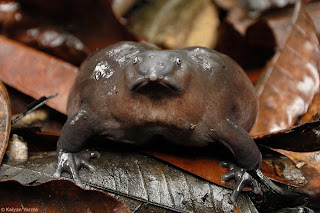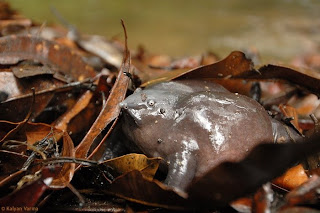
Hey there, ladies. I'm just a lonesome, evolutionary mishap who loves to party.
The Purple frog or Nasikabatrachus sahyadrensis can be described as a "living fossil." These strange creatures split evolutionarily from other frogs nearly 150 million years ago giving them features unique to any amphibian, so unique in fact that they have been put in their own taxonomic family. Purple frogs were officially discovered by scientists in 2003 in the hilly jungles of Western India. Making them particularly difficult to locate is their propensity for burrowing deep in the jungle floor and only emerging during the heavy rains of the monsoon season.

Or would you prefer the side view? Ba....ZAAAM!
Kalyan Varma, who is currently filming Purple frogs and snapped these sweet photos, says, "It feels like a big bag of jelly when you hold it in your hand, and I must say, it's a very strong frog."
Nicely put.
Special thanks to the Brothers Fallon for digging up this story!




